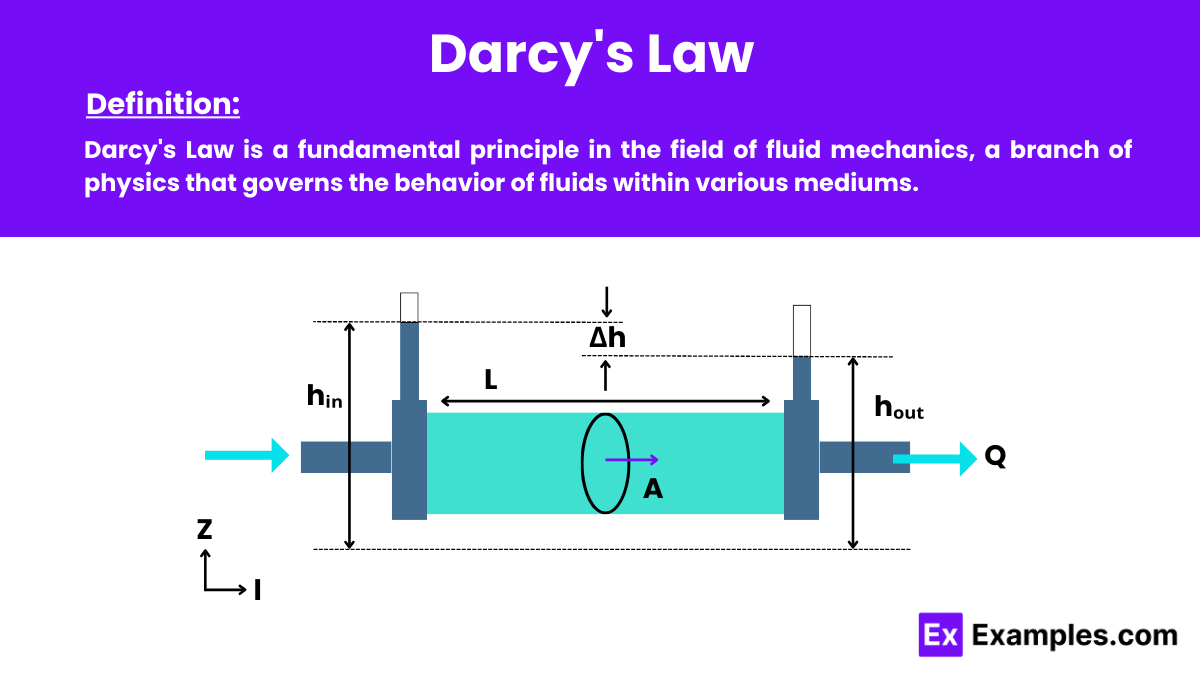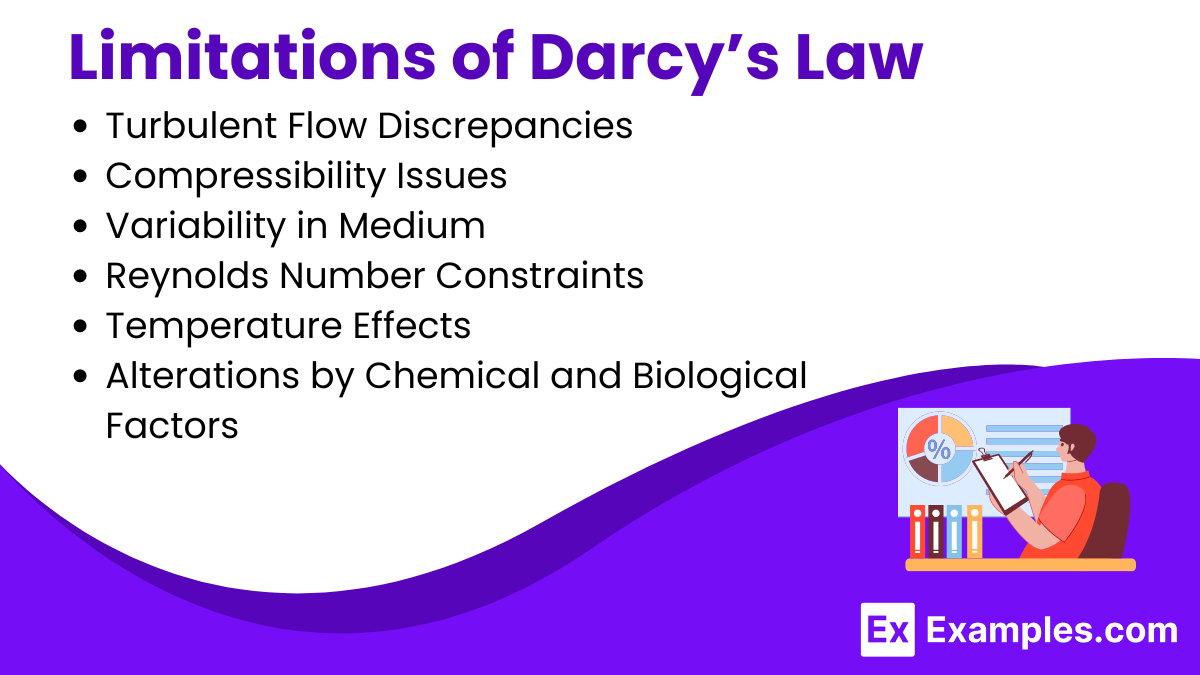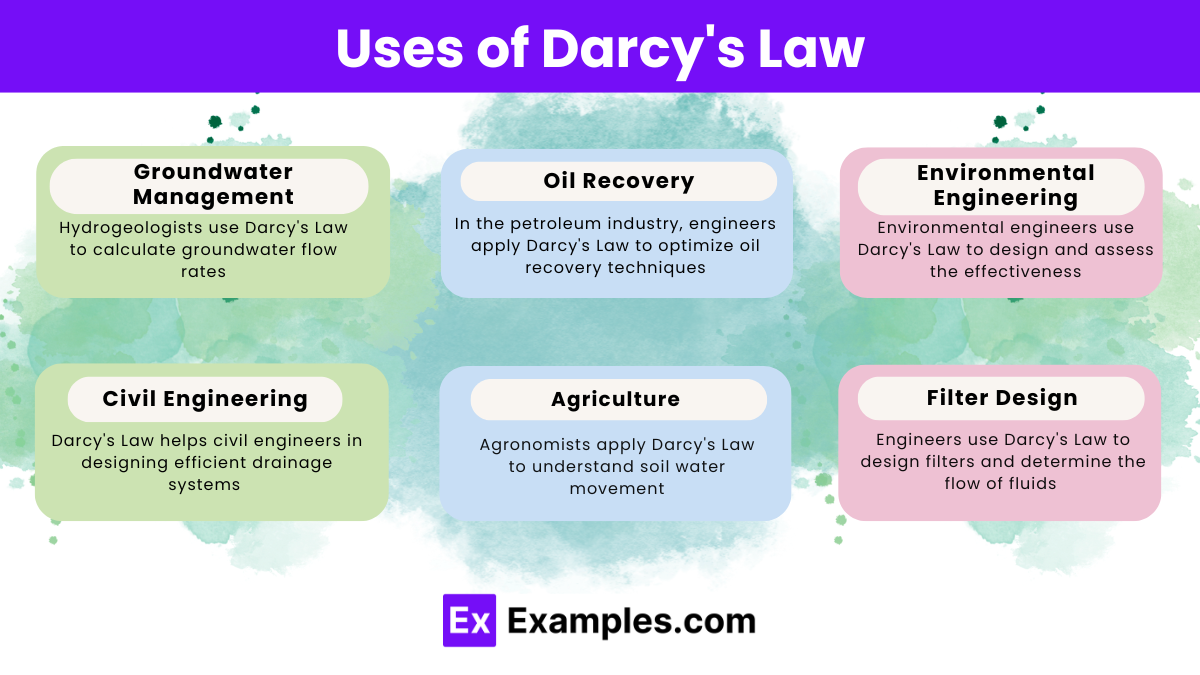What does Darcy\'s Law primarily describe?
The flow of electricity through a conductor
The flow of water through soil
The behavior of gases under pressure
The heat transfer in solids

Darcy’s Law is a fundamental principle in the field of fluid mechanics, a branch of physics that governs the behavior of fluids within various mediums. This law of physics quantitatively describes the flow of a fluid through a porous medium. Specifically, This Law states that the flow rate of the fluid through the porous medium is proportional to the pressure difference across the medium and inversely proportional to the resistance to flow, which is affected by the properties of the medium and the fluid. This law is vital for understanding and predicting the movement of water and other fluids in natural and engineered systems.
Darcy’s Law is mathematically expressed by the formula:
Where:
This equation is commonly used in hydrology and fluid mechanics to calculate the flow of water through porous media, such as soil or rock. The negative sign indicates that water flows from higher hydraulic head (or elevation) to lower hydraulic head, following the direction of decreasing hydraulic gradient.
This formula indicates that the flow rate is directly proportional to the permeability of the medium and the pressure difference. And inversely proportional to the length of the medium through which the fluid is flowing.


Darcy’s Law defines the relationship between fluid flow through porous media and the driving hydraulic gradient. Specifically, it predicts the flow rate using hydraulic conductivity and cross-sectional area.
Yes, Darcy’s Law is valid under conditions where the flow remains laminar. However, it may lose accuracy with high flow rates and turbulent conditions, where deviations from the law occur.
The Reynolds number for Darcy’s Law, indicating laminar flow through porous media, is generally less than one. This low value ensures that the flow remains steady and predictable.
Text prompt
Add Tone
10 Examples of Public speaking
20 Examples of Gas lighting
What does Darcy\'s Law primarily describe?
The flow of electricity through a conductor
The flow of water through soil
The behavior of gases under pressure
The heat transfer in solids
Which of the following is NOT a variable in Darcy's Law?
Hydraulic conductivity
Cross-sectional area
Pressure gradient
Temperature
What does hydraulic conductivity represent in Darcy's Law?
The ability of a material to conduct heat
The ability of a fluid to resist flow
The ease with which a fluid can move through a porous medium
The potential energy of a fluid
In Darcy's Law, what is the typical unit of hydraulic conductivity?
meters per second (m/s)
meters per day (m/day)
pascals per meter (Pa/m)
cubic meters per second (m³/s)
What is the primary application of Darcy's Law in engineering?
Designing electrical circuits
Predicting soil erosion
Modeling groundwater flow
Calculating air pressure changes
What does a high value of hydraulic conductivity indicate about a material?
It has a high resistance to fluid flow
It has low permeability
It allows fluids to pass through easily
It is highly compressible
Which parameter in Darcy's Law represents the driving force for fluid flow?
Fluid viscosity
Hydraulic gradient
Porosity
Fluid density
What kind of flow conditions does Darcy's Law assume?
Turbulent flow
Laminar flow
Supersonic flow
Transient flow
In Darcy's Law, what does the term "porous media" refer to?
Solid materials with no voids
Materials that allow light to pass through
Materials containing interconnected voids or pores
Fluids with high viscosity
Which field of study frequently uses Darcy's Law for its applications?
Astronomy
Geotechnical engineering
Pharmacology
Quantum mechanics
Before you leave, take our quick quiz to enhance your learning!

